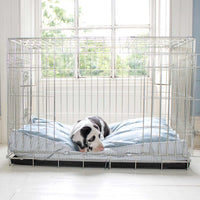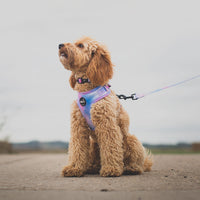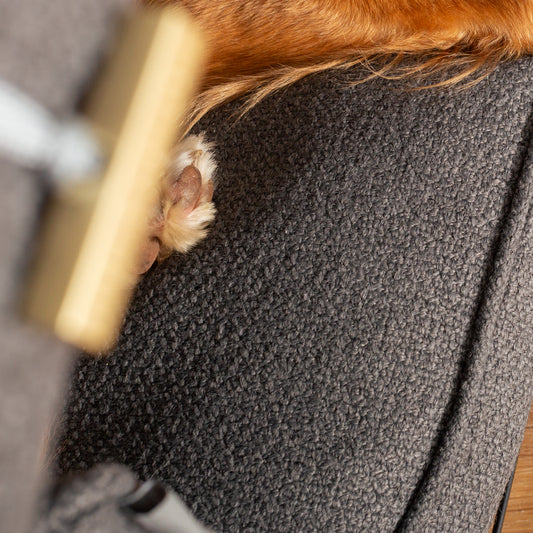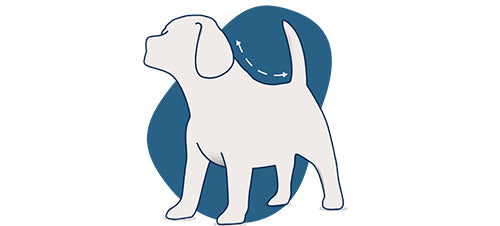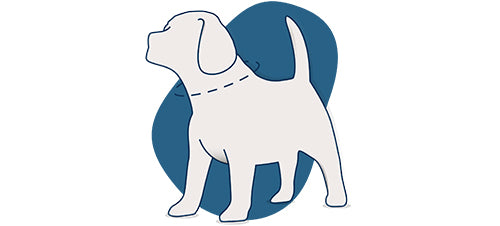Is your dog obsessed with balls? You may be wondering what the ordeal is with their fascination. And why do some dogs love balls but others are indifferent?
In this blog, we look at exactly why dogs are bonkers over balls, why they like playing fetch, and how to train them to fetch and drop a ball.
Why Are Dogs Obsessed With Balls?
The main reason most dogs like balls and specifically playing fetch is because of their prey drive. the way a ball moves when thrown or dropped replicates the movement of prey which stimulates your dog's prey instincts.
Balls are also a perfect size to fit in your dog’s mouth to chew, it’s also a natural next step for them instinctively after catching a ball. Chewing is also believed to be relaxing and self-soothing for dogs, it helps to release endorphins which make them feel good.
Another reason your dog may love balls so much is because of your impact as their owner. When you first brought your precious pooch home you may have started throwing and playing with balls to meet their needs for mental stimulation and exercise, soon they begin to develop a habit and positive association with playing fetch. Playing fetch with balls quickly becomes a routine for them and they rely on it to connect and bond with you as their owner which is why they become so obsessed with their ball. Fetch is a great trust builder and way to connect with your dog, it’s quality time for them where they feel like they are pleasing you.
Why Do Dogs Like Playing Fetch?
Playing fetch can be fun for both you and your dog, it helps them burn off energy and is great quality time for you both. But where does their instinct to fetch come from? Dogs also love to please their owners, chasing an object and retrieving it for you is a great way for them to feel like they’ve accomplished something for you – especially if they’re getting a reward at the end.
The movement of the ball when you throw it will mimic the movement of prey for your dog and their instinctive nature will kick in telling them to retrieve the ball. The reward centers of their brains are then triggered and release dopamine, which is why they love playing fetch so much, it mimics the thrill of the hunt for them.
Not all dogs will love to play fetch, this will depend on their breed and their temperament. For many breeds, especially hunting dogs like Cocker Spaniels and Border Terriers, their prey drive is so strong that catching and retrieving a ball or toy when thrown will satisfy it and act as a reward in itself.
How Do You Train A Dog To Fetch A Ball?
Is your dog not a fetching expert yet? Fear not, we’ve put together our top tried and tested tips to help them become a pro in no time
Choose the right toy – make sure the ball or toy you want them to fetch is the right size for them. Too big and they won’t be able to hold it, if they’re a puppy or a senior they may need something easier to grasp with their teeth.
Make the toy more enticing for them, balls such as the KONG activity ball are great for putting treats in to encourage them to play with the ball. You can also try teasing them with the ball before playing fetch to gain their attention and to build their prey drive up
If your dog loves to chase a ball and not return it why not try playing bait and switch to get them accustomed to bringing the ball back? To play you’ll need to get two balls, throw the first one, and once your dog reaches it use the second one to tease them and entice them back. Once they’re back to you, with or without the first toy, throw the second one in a different direction. Whilst they’re getting the second toy, go to collect the toy and then repeat the pattern of throwing one toy and teasing with another. Chances are your dog will become too excited to get the next toy that they will stop dropping the first toy and will start bringing it back to you. Bringing the toy back in anticipation of another will slowly become a habit and your dog may be ready to start playing fetch with one toy at a time.
How Do I Teach My Dog To Drop The Ball?
Once your dog has started to bring the dog back to you say the word ‘drop’ and then put a treat in their mouth, in order to eat the treat your dog will have to drop the ball. Repeat this several times.
Next start to build this up by saying Drop and waiting 2-3 seconds for their mouths open. Make sure to reward them with a treat and fuss once they drop the ball. If their mouth doesn’t open try step one again a few more times. Keep repeating until your dog starts to associate ‘drop’ with letting go of their toy.

























































